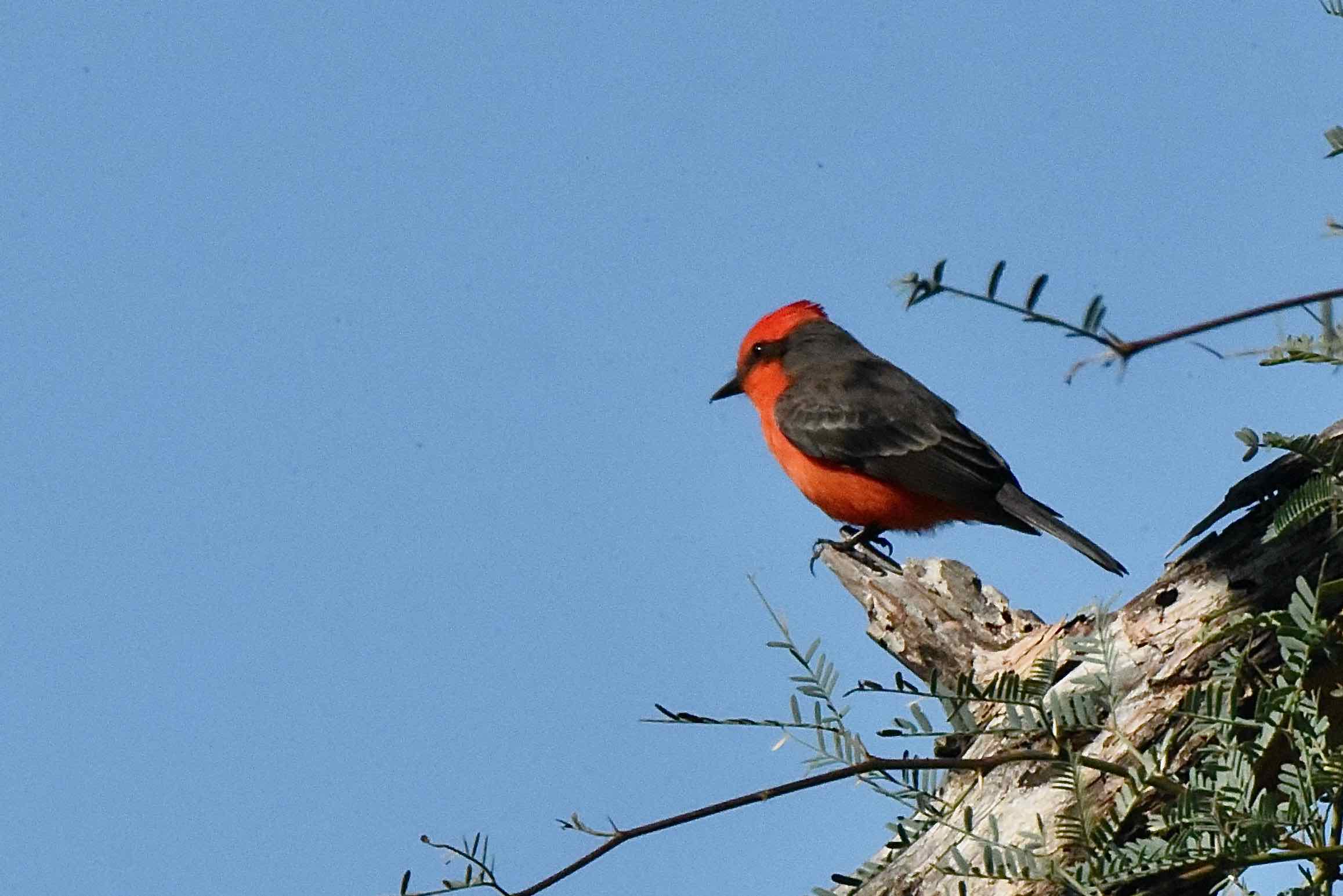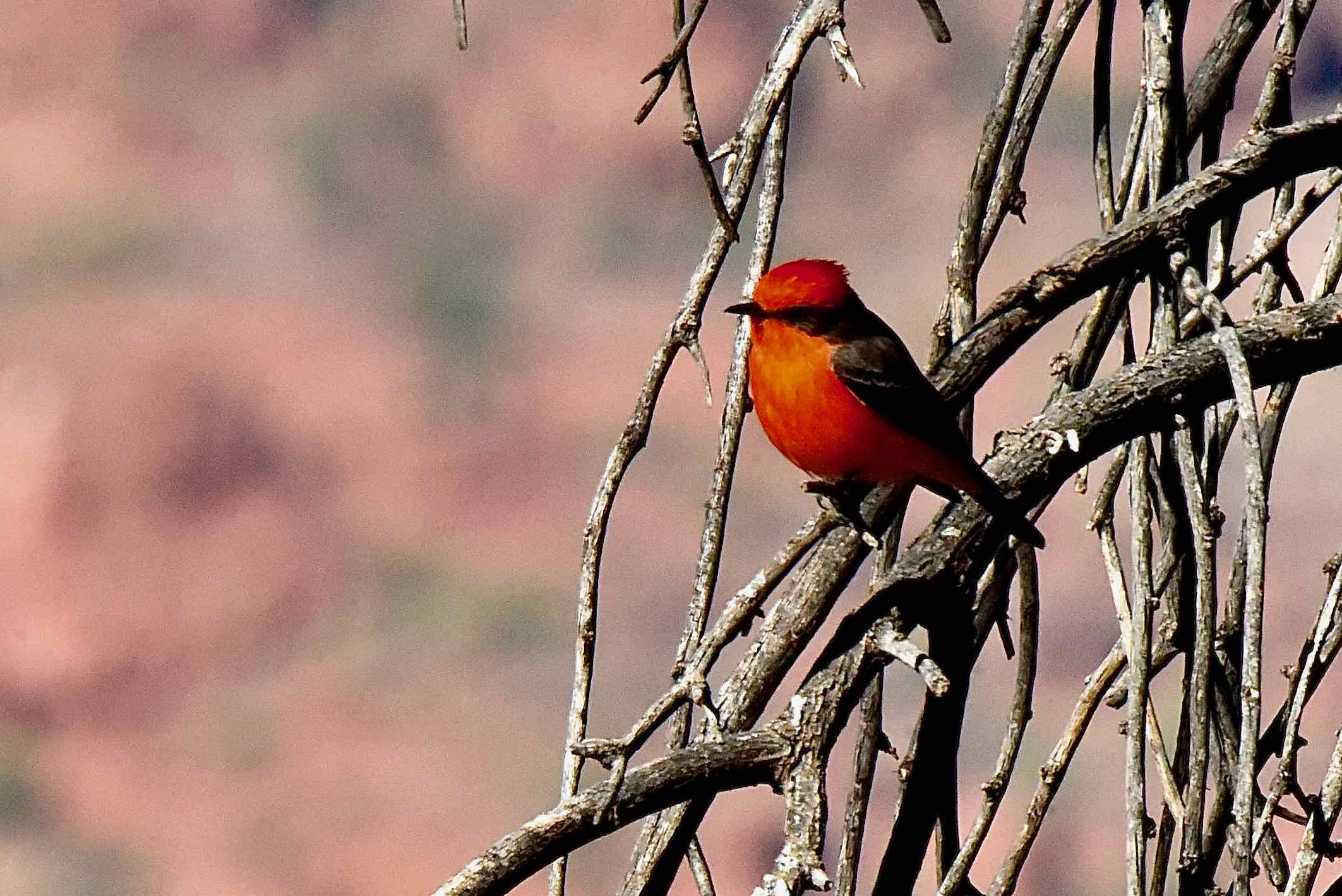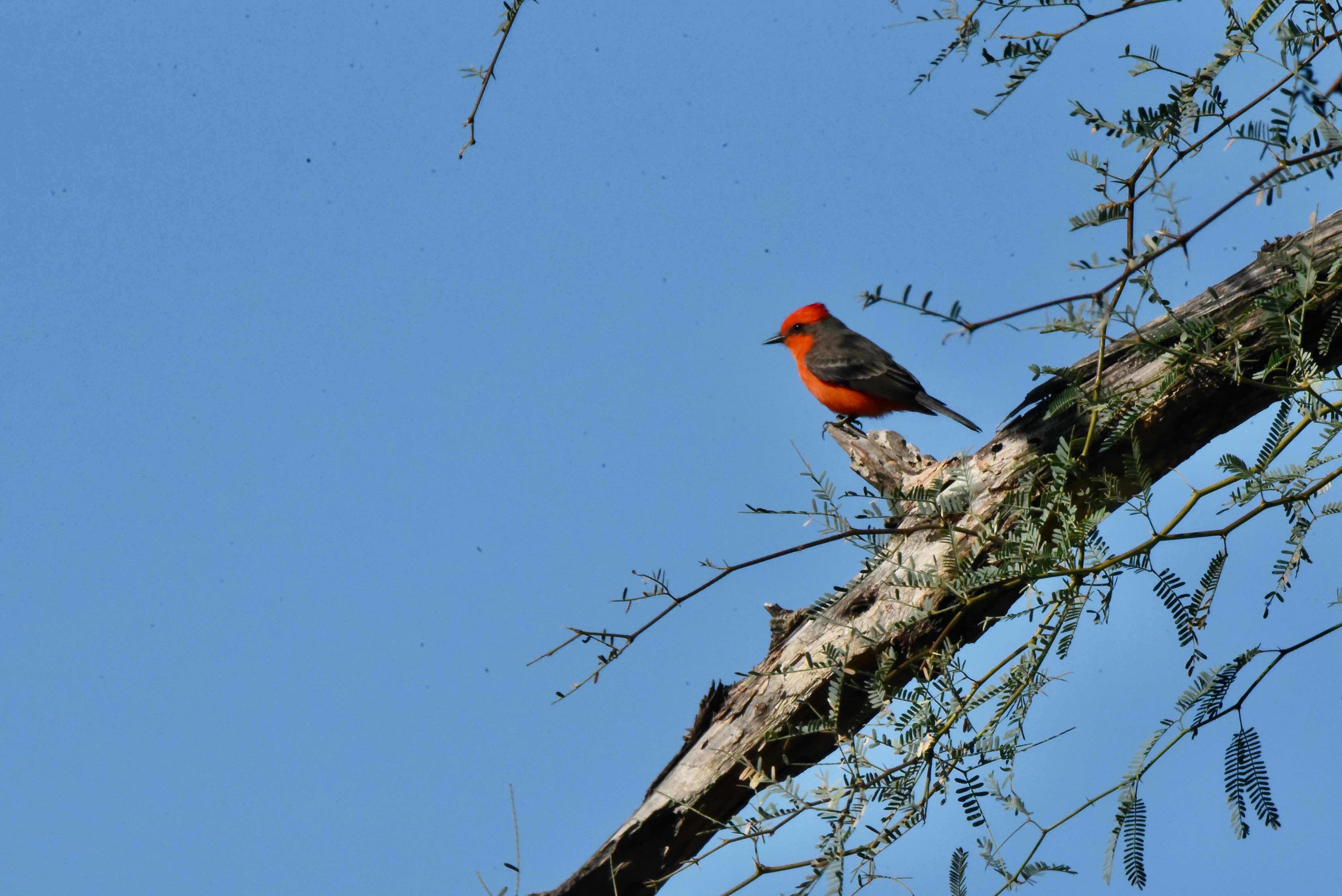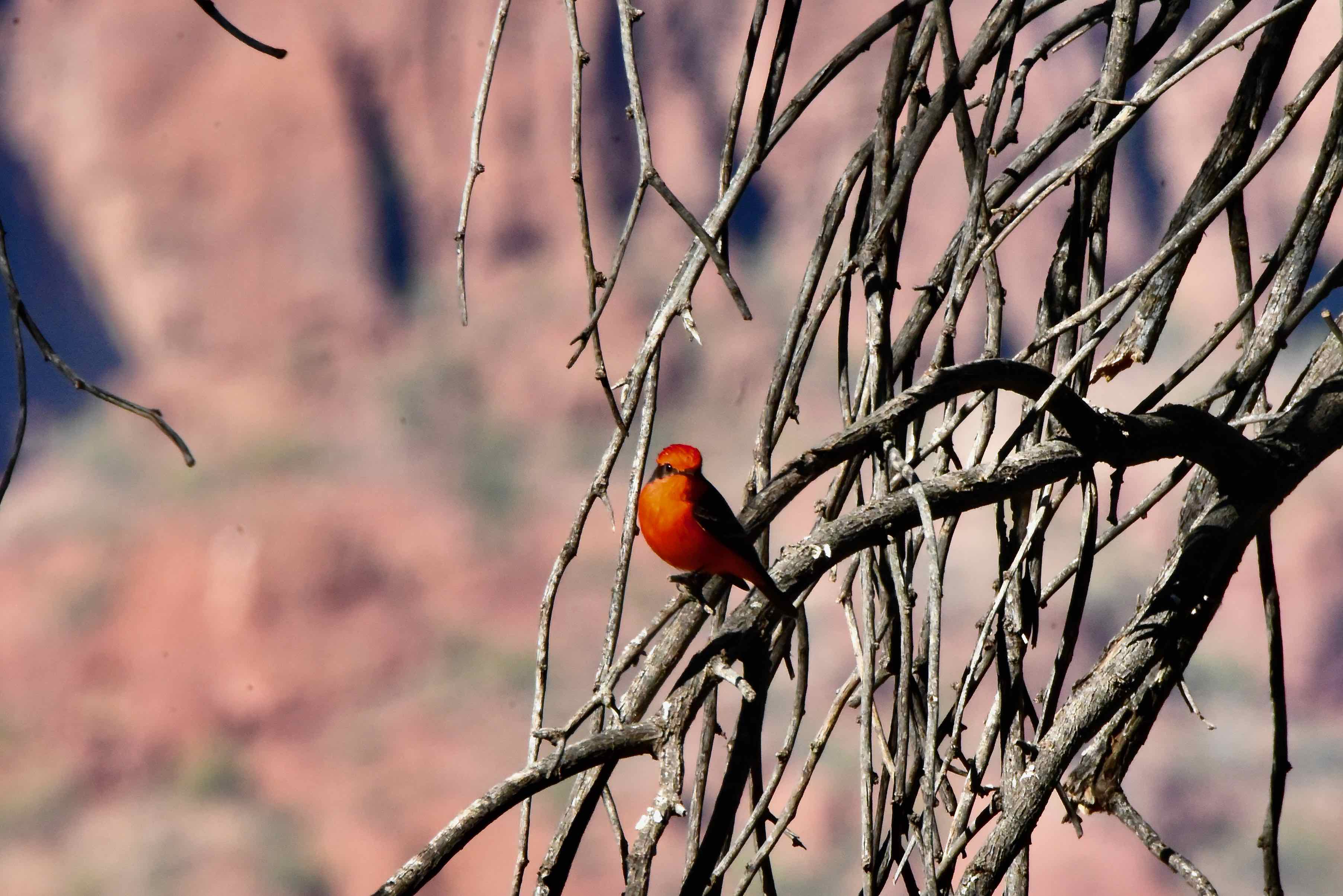
Vermilion flycatcher, photographed at the Salt River Recreation Area, Tonto National Forest, Maricopa County, AZ, in December 2023.
The vermilion flycatcher, Pyrocephalus rubinus, is hardly a common sight in Florida, but if you do happen to get a glimpse of one you probably won't forget it. It is a spectacular-looking bird, particularly in flight. The scientific name, pyrocephalus, roughly translated is Greek for fire head.
In the United States, vermilion flycatchers are more likely to be spotted in the Southwest — Arizona, California and New Mexico — where they are year-round residents. Part of the population is migratory, however, and they'll spend winters along the Gulf Coast of Texas, with some wandering eastward into Louisiana, Mississippi, Alabama and Florida. The numbers might be small, but sightings along the Gulf Coast, in Everglades National Park, Miami-Dade County and even Central Florida are regularly made.
Actually, the vermilion flycatcher's normal territory is quite extensive and includes most of Mexico, both as a year-round resident and winter visitor, parts of Central America, much of the Caribbean, Atlantic and Pacific coasts of South America and much of the continent's interior. One the bird's 12 subspecies lives in the Galapagos Islands. We happened on the vermilion flycatcher in these photos during a trip to Arizona's Tonto National Forest. The pictures don't really capturing the bird's brilliant plumage.
The vermilion flycatcher is a small, stocky bird, with a body length of less than six inches. Males (one pictured on this page) have a bright red to orange head, with a dark mask around the eyes. The chest and belly are similarly brilliantly colored, while the wings and back are dark brown to near black.
Females totally lack the males' brilliance. Instead, they are a drab gray-brown in the face and head, darker on the wings and back. The chest and belly are similar to the face and head but with a slight tinge of red or orange.
Vermilion flycatchers in the U.S. tend to live near water in otherwise arid places, like desert and scrub. They also like open places, including farm fields.They will perch in a conspicuously open spot where they can dash out to grab flies, butterflies, bees, grasshoppers and other bugs. They will also pick a meal off the ground.
The bird's mating ritual is both elaborate and spectacular. Males often present the female with an insect just before doing the act. They build their nests off the ground in trees, where a fork in a branch occurs. The nest itself is cup-shaped, made of grass and fibers, lined with feathers and hair. Clutches are usually two to four eggs, which require about two weeks to hatch. Most sitting is done by mom, but both parents feed their offspring. The young fledge at about 20 days. Mom might leave early to start a second nest — vermilion flycatchers can have two broods a season — while dad finishes up rearing duties.
Globally, the vermilion flycatcher population is secure, but development and water-use are threats, particularly in the Southwest. The Galapagos subspecies is declining as well.
Vermilion flycatchers are members of Tyrannidae, the flycatcher family.



